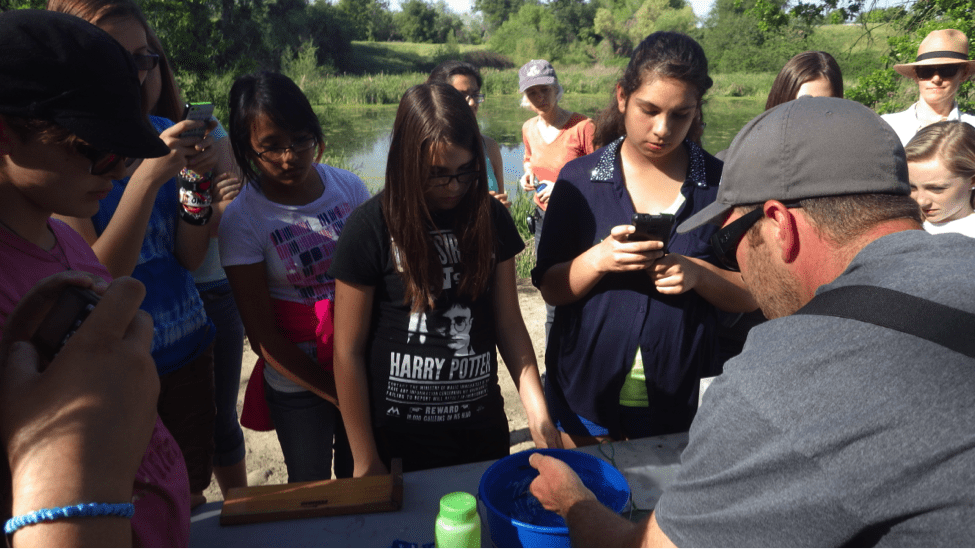Friday May 9, 2014
What comes to mind when you hear this word: ‘scientist’? If you pictured a gray-haired man in a lab coat that looks remarkably like Albert Einstein, then you are not alone, according to the CEO of Expanding Your Horizons. FISHBIO recently participated in an outreach event hosted by this network of professionals, educators, parents, and community leaders in the Bay Area of California, who want to change that default image of “scientist” to include women. Despite the statistic that women today currently earn 41% of the PhDs in science, technology, engineering, and mathematics (STEM) fields, there is still a vast gender gap when it comes to women who actually have a STEM career (women represent only 24% of the STEM workforce). Statistics like these have motivated the White House to highlight our country’s need for more girls to become scientists and engineers if we want “to out-build, out-educate, and out-innovate future competitors.” A crucial part of maintaining our competitive edge is identifying strong role models who can inspire girls to see themselves as our nation’s future scientists and engineers.
FISHBIO staff hardly fit the description of gray-haired men in lab coats (in fact, few of us have ever donned lab coats), and we are passionate about sharing our enthusiasm for fisheries research and fieldwork. In the past two months, we have participated in two events to show girls just how cool, fun, and fascinating fisheries research can be. During the Expanding Your Horizons conference at University of California, Berkeley in March, we hosted a workshop called “Fishes of California,” where girls tried out some standard methods used by biologists to understand fish growth. The middle school girls were initially a bit squeamish about touching real fish, but warmed up once their curiosity got the best of them. In April, a group of girls from a local chapter of American Association of University Women (AAUW) visited one of our field sites on the Stanislaus River to get hands-on experience in fisheries research (see photo above). After receiving instructions on proper fish handling, the girls enthusiastically measured the lengths of juvenile salmon that were captured in a rotary screw trap.
These girls are more likely to attend college than girls in previous generations. In fact, according to the US Department of Education, in 2009-10, females represented 57% of students receiving a bachelor’s degree, and 63% of students receiving a master’s degree, which indicates that the tides are turning in higher education in general. However, women are still far behind when it comes to earning degrees in STEM fields in particulr. Closing the gender gap is not only necessary for our nation’s economy, but it pays in other ways. Women in STEM careers earn 33% more on average in these fields than in other, low-growth fields, offering yet more inspiration for pursing a STEM career. Encouraging the growth of women in STEM careers will require a nation-wide effort, and here at FISHBIO we are enjoying playing our part and sharing our enthusiasm for fisheries research.


